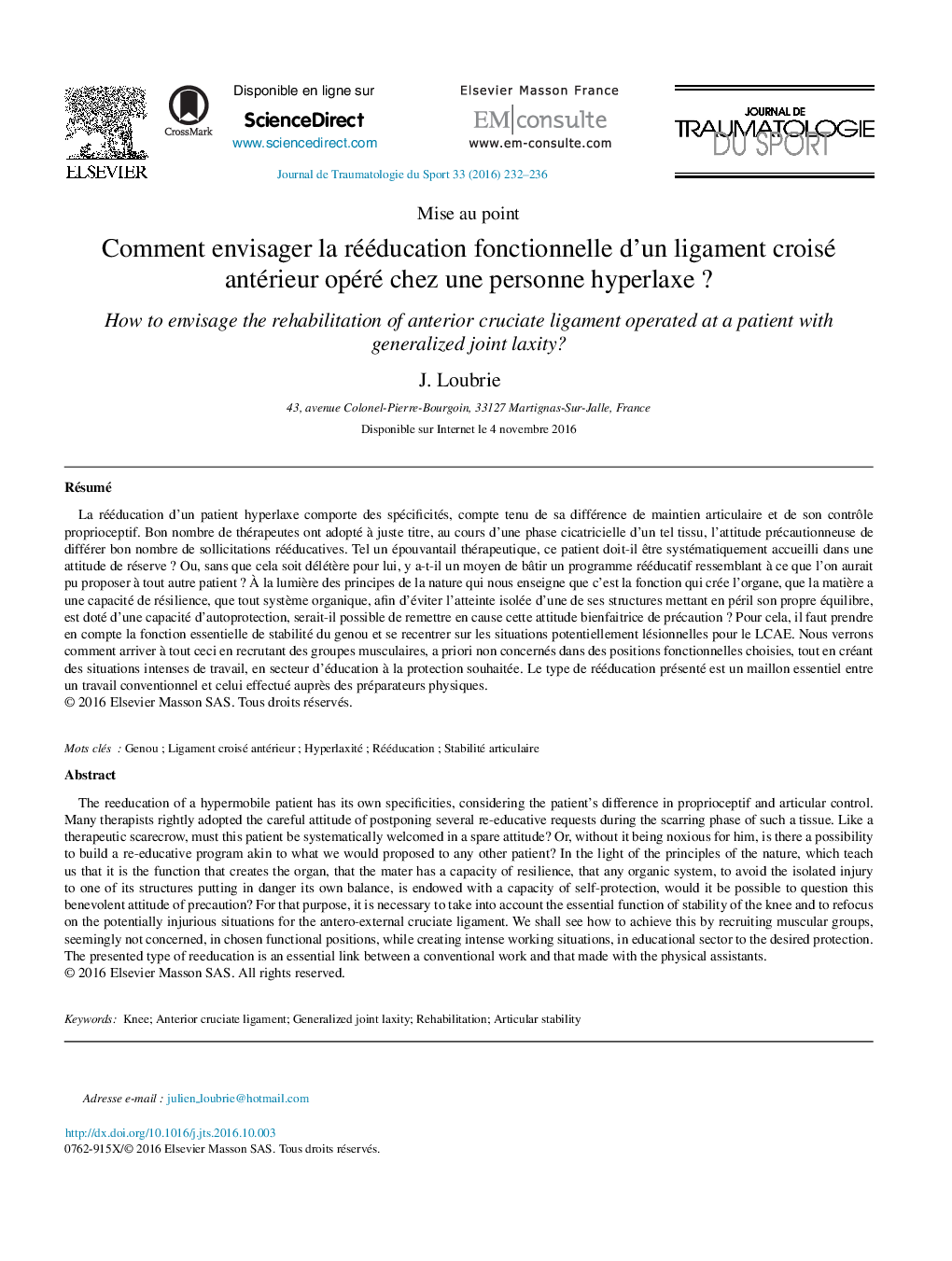| Article ID | Journal | Published Year | Pages | File Type |
|---|---|---|---|---|
| 8801395 | Journal de Traumatologie du Sport | 2016 | 5 Pages |
Abstract
The reeducation of a hypermobile patient has its own specificities, considering the patient's difference in proprioceptif and articular control. Many therapists rightly adopted the careful attitude of postponing several re-educative requests during the scarring phase of such a tissue. Like a therapeutic scarecrow, must this patient be systematically welcomed in a spare attitude? Or, without it being noxious for him, is there a possibility to build a re-educative program akin to what we would proposed to any other patient? In the light of the principles of the nature, which teach us that it is the function that creates the organ, that the mater has a capacity of resilience, that any organic system, to avoid the isolated injury to one of its structures putting in danger its own balance, is endowed with a capacity of self-protection, would it be possible to question this benevolent attitude of precaution? For that purpose, it is necessary to take into account the essential function of stability of the knee and to refocus on the potentially injurious situations for the antero-external cruciate ligament. We shall see how to achieve this by recruiting muscular groups, seemingly not concerned, in chosen functional positions, while creating intense working situations, in educational sector to the desired protection. The presented type of reeducation is an essential link between a conventional work and that made with the physical assistants.
Keywords
Related Topics
Health Sciences
Medicine and Dentistry
Orthopedics, Sports Medicine and Rehabilitation
Authors
J. Loubrie,
